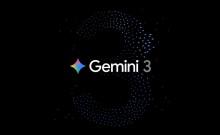
Australian entrepreneur Craig Wright announced on Monday he was the one who had invented bitcoin, the independent crypto-currency. However, experts believe the evidence he provided doesn't prove he is in fact Satoshi Nakamoto, the name associated with creation of bitcoin.
Wright presented technical proof that he was the creator of bitcoin by demonstrating that he had access to a block of bitcoin mined or created in the early days of the crypto-currency. bitcoins from these blocks were sent to Hal Finney, an engineer who helped in the development of bitcoin, and the transaction was signed in Nakamoto's name using his cryptographic key. In his blog, Wright explained how bitcoin transactions can be verified, and presented an example of the signature used by Nakamoto.
PGP cryptographic keys, which were used in this case, work in pairs. A private key is used to encrypt the data and a public key is used to decrypt it and verify the identity of the encryptor.
However, Jerry Brito and Peter Van Valkenburgh from Coin Center believe merely possessing the signature used by Nakamoto does not prove that Wright is in fact Nakamoto.
Brito and Valkenburgh say the key used by Wright, also known as the 'Satoshi Key,' doesn't really exist as there isn't enough evidence to prove its existence. "As far as we can tell, there is no evidence of Satoshi ever signing a message with the Satoshi key or any PGP key," they wrote.
They also said even if the Satoshi Key did exist, simply signing a file with it isn't a proof of identity, but merely proves that the person using the key is in possession of it.
They agree that a new message cryptographically signed using the key associated with the first ever bitcoin block to be ever mined, known as the "Genesis Block," would be more conclusive evidence.














